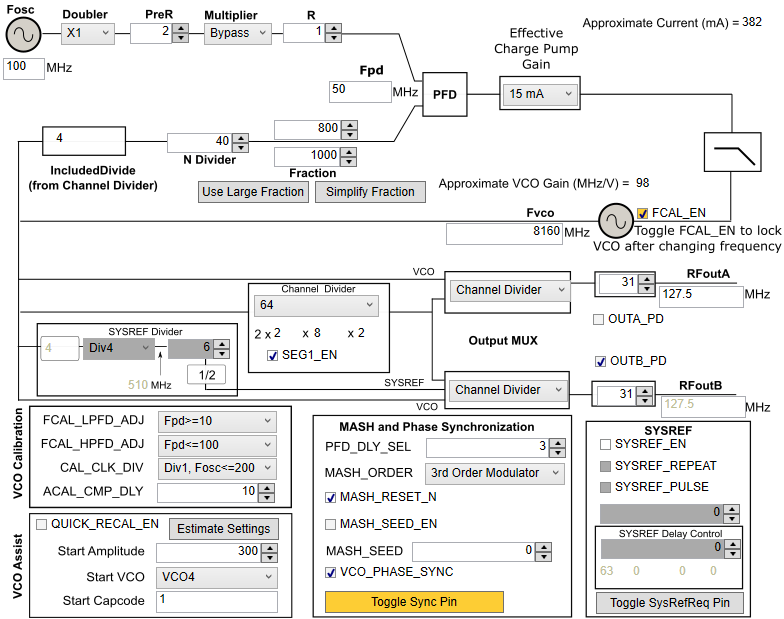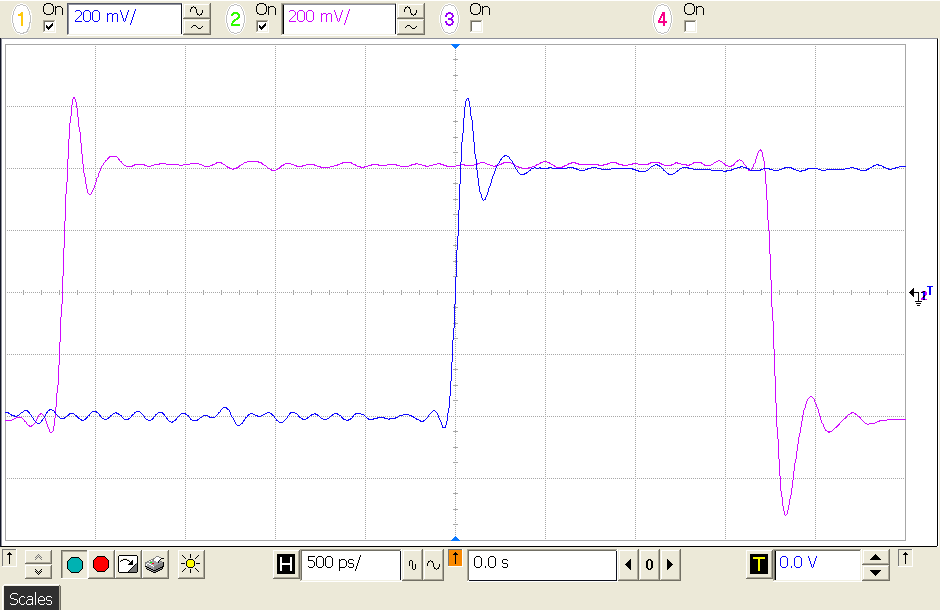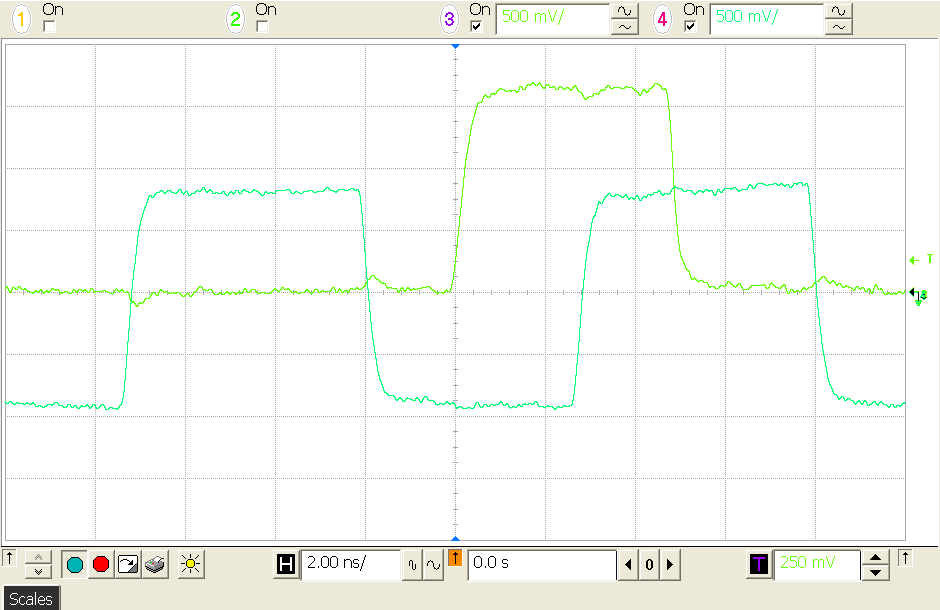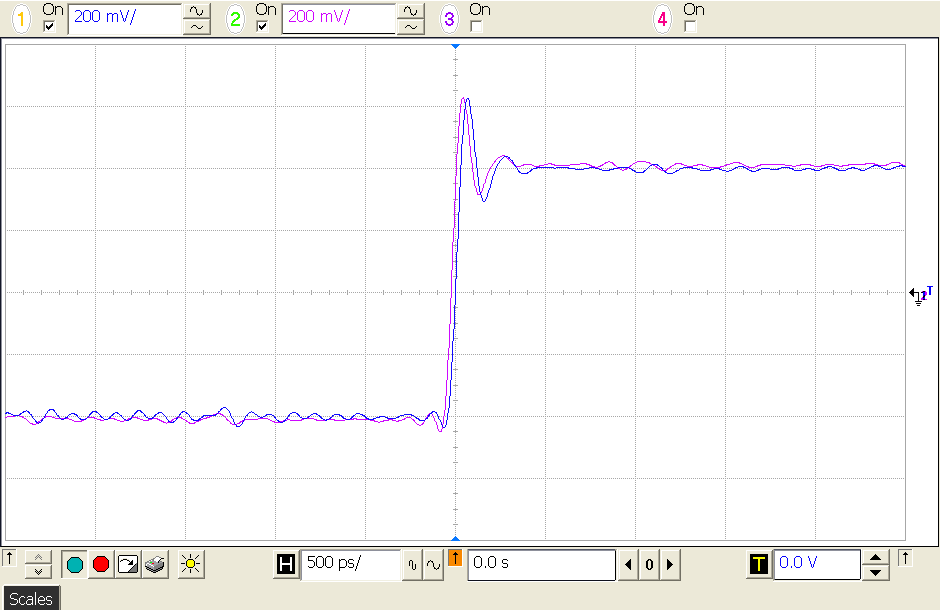SNAU278 July 2022
3.1 Category 3 Synchronization
Use the flow chart in the data sheet to determine the phase synchronization category. If it is a category 3 synchronization, there is limitation to the reference clock frequency and the timing of the SYNC signal with respect to the reference clock is critical. Shown below is a category 3 synchronization example.
 Figure 3-1 Category 3 TICS Pro Configuration
Figure 3-1 Category 3 TICS Pro ConfigurationIf it is a category 3 synchronization, VCO_PHASE_SYNC should be checked to put the devices in SYNC mode. After programming, the outputs from the two LMX2594 devices may not be phase-aligned.
 Figure 3-2 Output Phases Before Synchronization
Figure 3-2 Output Phases Before SynchronizationA timing critical SYNC pulse is needed to trigger synchronization.
 Figure 3-3 Timing Critical SYNC Pulse
Figure 3-3 Timing Critical SYNC Pulse Figure 3-4 Output Phases After Synchronization
Figure 3-4 Output Phases After Synchronization